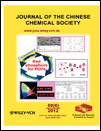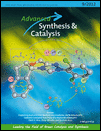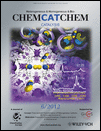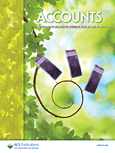
Reactions
Scope & Guideline
Empowering Researchers with Open Access Insights
Introduction
Aims and Scopes
- Catalytic Processes and Reaction Mechanisms:
The journal emphasizes research on catalytic systems and their mechanisms, including heterogeneous and homogeneous catalysis, with a focus on improving reaction efficiency and selectivity. - Sustainable Chemistry and Green Processes:
A significant scope of the journal is dedicated to sustainable chemistry, including the valorization of biomass, green synthesis methods, and the development of eco-friendly catalysts to minimize environmental impact. - Nanotechnology and Materials Science:
Research involving the synthesis and application of nanomaterials, including nanoparticles and nanocomposites, is a core area, highlighting their roles in catalysis, drug delivery, and environmental remediation. - Biochemical and Biocatalytic Processes:
The journal covers studies on enzymatic and microbial processes, showcasing the potential of biocatalysts in the synthesis of fine chemicals and biofuels. - Thermodynamics and Kinetic Modeling:
There is a consistent focus on the thermodynamic and kinetic aspects of chemical reactions, providing insights into reaction conditions, mechanisms, and optimization strategies.
Trending and Emerging
- Biomass Valorization and Green Chemistry:
There is a growing emphasis on the conversion of biomass into valuable chemicals and fuels, showcasing the industry's shift towards renewable resources and sustainable practices. - Advanced Catalytic Systems:
Innovations in catalytic systems, including the development of novel catalysts and catalytic processes, are trending, particularly those that enhance efficiency and reduce environmental impact. - Nanomaterials in Environmental Applications:
The use of nanomaterials for environmental remediation and energy applications is increasingly prominent, reflecting a broader interest in sustainable solutions to environmental challenges. - Electrochemical Processes and Technologies:
Emerging research in electrochemistry, particularly in relation to energy storage and conversion, is gaining traction, highlighting the importance of electrochemical methods in modern chemical synthesis. - Integration of Artificial Intelligence and Machine Learning:
The incorporation of AI and machine learning techniques in chemical research for predictive modeling and optimization of reactions is an emerging trend, representing a significant technological advancement in the field.
Declining or Waning
- Traditional Organic Synthesis:
There is a noticeable decrease in publications focused solely on classical organic synthesis methods, as the journal shifts towards more innovative and sustainable approaches. - Inorganic Chemistry without Catalytic Context:
Research purely in inorganic chemistry, particularly without applications in catalysis, has seen a decline, indicating a preference for studies that integrate inorganic compounds within catalytic frameworks. - Conventional Fuel Production Methods:
Themes related to conventional fossil fuel production processes are becoming less frequent, as the journal increasingly prioritizes alternative energy sources and sustainable practices.
Similar Journals

Reaction Kinetics Mechanisms and Catalysis
Exploring the Frontiers of Catalysis and KineticsReaction Kinetics Mechanisms and Catalysis is an esteemed academic journal published by SPRINGER, specializing in the fields of catalysis and physical and theoretical chemistry. With ISSN 1878-5190 and E-ISSN 1878-5204, this journal serves as a crucial platform for researchers and professionals to disseminate and engage with cutting-edge findings in reaction kinetics, catalytic processes, and mechanistic insights. Operating under an open access model, the journal ensures broad accessibility to its content, enhancing its impact within the scientific community. As of 2023, it is positioned in the Q4 category in catalysis and Q3 in physical and theoretical chemistry, reflecting its growing influence, yet also its potential for further advancement. Aiming to foster collaborations and innovations, Reaction Kinetics Mechanisms and Catalysis is poised to continue shaping the discourse in its field, making it an essential read for researchers, students, and industry professionals alike.

JOURNAL OF THE CHINESE CHEMICAL SOCIETY
Advancing Chemistry Through Innovative ResearchJOURNAL OF THE CHINESE CHEMICAL SOCIETY, published by WILEY-V C H VERLAG GMBH, is a vital resource in the field of chemistry, focusing on a broad array of topics pertinent to general chemistry and its advancing sub-disciplines. Established in 1954 and running through 2024, this journal serves as a significant platform for the dissemination of high-quality research, showcasing innovative findings and developments within the chemical sciences. With its Q3 category ranking and positioning at Rank #203 in General Chemistry per Scopus, it reflects the journal's commitment to research excellence and impact. While not an open-access publication, it ensures accessibility to a global audience, making it an essential tool for researchers, professionals, and students alike seeking to stay informed and engaged in the evolving landscape of chemistry.

ADVANCED SYNTHESIS & CATALYSIS
Exploring the forefront of catalytic technologies.ADVANCED SYNTHESIS & CATALYSIS is a prestigious academic journal published by Wiley-VCH Verlag GmbH, based in Germany. This journal, with ISSN 1615-4150 and E-ISSN 1615-4169, plays a pivotal role in the fields of Chemistry and Chemical Engineering, earning commendable rankings such as Q2 in Catalysis and Q1 in Organic Chemistry in 2023. Its high impact factor and recognition—ranking #18 in both Organic Chemistry and Catalysis—further underscore its significance as a platform for groundbreaking research and innovative methodologies. Spanning from 1996 through 2024, ADVANCED SYNTHESIS & CATALYSIS aims to disseminate high-quality, cutting-edge studies related to synthetic processes and catalytic technologies, ensuring accessibility via their open access options. By fostering a vibrant scholarly community, this journal serves as an essential resource for researchers, professionals, and students dedicated to driving advancements in synthetic and catalytic chemistry.

ChemCatChem
Pioneering Insights in Inorganic and Organic Chemistry.ChemCatChem is a leading international journal published by WILEY-V C H VERLAG GMBH that has been making significant contributions to the fields of catalysis, inorganic and organic chemistry, as well as physical and theoretical chemistry since its inception in 2009. With an established reputation for excellence, this journal holds commendable rankings in various categories, including Q1 in Inorganic Chemistry and Q1 in Organic Chemistry, demonstrating its pivotal role in advancing scientific knowledge and innovation. Notably, it has achieved a high Scopus ranking, securing 10th place out of 79 in Inorganic Chemistry, among others, showcasing its influence and quality. Although open access options are not available, the journal offers cutting-edge research articles, reviews, and insights that are vital for researchers, professionals, and students aiming to stay at the forefront of chemical science. With its address rooted in Weinheim, Germany, and convergence projected to continue until 2024, ChemCatChem remains a dynamic platform for disseminating vital advancements within the chemical community.

Catalysis in Industry
Advancing catalytic innovation for a sustainable future.Catalysis in Industry, published by MAIK NAUKA-INTERPERIODICA, is a pivotal journal in the field of chemical engineering and catalysis. With its ISSN 2070-0504 and E-ISSN 2070-0555, this journal has been dedicated to advancing the understanding and application of catalytic processes in industrial settings since its inception in 2010. Despite its Q4 ranking in the category of Catalysis as of 2023 and a Scopus rank of #61/68, the journal serves as a valuable platform for researchers and practitioners to disseminate innovative ideas and findings that contribute to the evolution of catalysis technology. Published in Russia, Catalysis in Industry aims to bridge the gap between academic research and industrial practice, providing Open Access options to facilitate widespread accessibility and encourage a collaborative approach to chemical engineering challenges. As the industry grapples with the demand for sustainable solutions and efficient processes, this journal remains a critical resource for the academic community, aspiring professionals, and students eager to deepen their knowledge in catalytic applications.

ACCOUNTS OF CHEMICAL RESEARCH
Advancing the Frontiers of Chemistry and MedicineACCOUNTS OF CHEMICAL RESEARCH, published by the American Chemical Society, is a premier journal dedicated to advancing the field of chemistry and its applications in medicine. With an impressive impact factor and recognition as a Q1 journal in both chemistry and medicine categories, it ranks among the top-tier publications, exhibiting an outstanding Scopus rank of 8 out of 408 in general chemistry, placing it in the 98th percentile. This journal has been a vital source of innovative and significant research since its inception in 1968, and it aims to provide a platform for high-quality research articles, reviews, and critical essays that bridge the gap between chemical research and clinical implications. While it is not an open-access publication, the insights available in Accounts of Chemical Research are invaluable for researchers, professionals, and students seeking to explore the latest developments and interdisciplinary approaches within the dynamic fields of chemistry and medicine.

Nature Synthesis
Advancing the Frontiers of Chemical SynthesisNature Synthesis, published by SpringerNature, is a premier peer-reviewed journal dedicated to advancing the field of synthesis in chemistry and materials science. With an impressive impact factor and categorized in the Q1 quartile for Chemistry (miscellaneous), Inorganic Chemistry, Materials Chemistry, and Organic Chemistry, it ranks prominently among its peers, reflecting its high-quality research output and relevance.
This journal provides a platform for researchers, professionals, and students to publish innovative synthesis methodologies, novel materials, and interdisciplinary approaches that push the boundaries of chemistry. Operating under an Open Access model, it ensures that research is widely accessible, fostering collaboration and engagement across the global scientific community.
Situated in the United Kingdom, Nature Synthesis is committed to contributing to the scientific discourse from 2022 to 2024, and beyond, as it continues to highlight significant advancements across chemistry domains.

Journal of Industrial and Engineering Chemistry
Driving Excellence in Chemical Engineering ResearchThe Journal of Industrial and Engineering Chemistry, published by Elsevier Science Inc, stands as a premier platform since its inception in 1996, dedicated to the dissemination of innovative research in the field of Chemical Engineering. Located in South Korea, this influential journal has established itself with an impressive impact factor and is categorized in the Q1 quartile for chemical engineering (miscellaneous), ranking in the top 12% of its category according to Scopus. With a focus on cutting-edge industrial applications, the journal covers a diverse range of topics including chemical processes, engineering innovations, and sustainable practices, appealing to a broad spectrum of researchers, professionals, and students. Although currently not open access, the journal offers a wealth of resources for advancing knowledge and driving forward the chemical engineering discipline. The converged years from 1996 to 2024 reflect its ongoing commitment to excellence and timeliness in publishing high-quality research.

RUSSIAN JOURNAL OF APPLIED CHEMISTRY
Unveiling Trends and Challenges in Applied ChemistryRUSSIAN JOURNAL OF APPLIED CHEMISTRY, published by PLEIADES PUBLISHING INC, serves as a pivotal platform for advancing knowledge in the fields of chemical engineering and general chemistry. With an ISSN of 1070-4272 and an E-ISSN of 1608-3296, this journal has been in continuous publication since 1995 and is set to continue until 2024. Although it operates without an open access model, researchers can access a wealth of innovative research findings, critical reviews, and insightful discussions that reflect the current trends and challenges in applied chemistry. Its rankings place it in Q3 quartiles for both Chemical Engineering and Chemistry as of 2023, indicating its emerging influence within these disciplines. The Scopus rankings further highlight its relevance, positioning it in the lower percentiles, suggesting a fertile ground for researchers aiming to elevate the field. Engaging with this journal can enrich academic and professional understanding, making it an essential resource for anyone dedicated to furthering their expertise in applied chemistry.

Physical Chemistry Research
Unveiling new methodologies in fluid flow and transfer processes.Physical Chemistry Research, published by the Iranian Chemical Society, is an esteemed academic journal dedicated to advancing knowledge within the fields of *Fluid Flow and Transfer Processes*, *Physical and Theoretical Chemistry*, and *Statistical and Nonlinear Physics*. Since its inception in 2013, the journal has established a crucial platform for researchers, professionals, and students to share innovative findings and methodologies, enhancing collaboration and knowledge dissemination in the physical chemistry community. With impactful contributions recognized in Quartile 3 and Quartile 4 classifications across various categories, the journal is positioned to cultivate emerging research trends as it continues to converge through 2024. Researchers can benefit from diverse perspectives on crucial phenomena in physical chemistry, as the journal is indexed in prominent databases, further increasing accessibility and visibility. The *open access* policy ensures that cutting-edge research remains available to a broad audience, promoting the growth of the discipline globally.